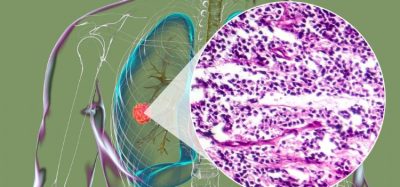Expert view: The QC micro labs have grown to tackle new challenges
Posted: 29 October 2018 | | No comments yet
Timelines, budgets and regulatory constraints have grown alongside that of the Quality Control (QC) lab’s position in drug development. The main goal of the lab and more widely of the manufacturing industry is to increase safety for the end user and guarantee patients’ health…
Where are you seeing changes in the role of the Quality Control lab and its impacts on the pharmaceutical industry?
Adoption of high standard quality processes has expanded, increasing the assurance of a safe, effective drug supply to the consumer and significantly improving manufacturing quality performance. The Quality Control lab has played a key role in this evolution, as data generated by the QC lab is fundamental to continuous quality improvements. The QC lab has become more integral to a company’s overall manufacturing operations, with interaction between operations and quality control expanding, and increased influence of the QC lab on design and development of processes compared with the past.
Where do you see the biggest challenges, innovations, and opportunities in this field?
From the perspective of a contract research organisation (CRO) like us, it is vital to thoughtfully build a portfolio of products and services to best support and anticipate tomorrow’s drug development needs. More specifically, the unique microbiological challenges presented in the manufacturing phase of the pharmaceutical lifecycle requires a broad range of QC solutions, including rapid microbiological methods and all modern micro methodologies for improved product testing, process verification, and ultimately increased patient safety. With an increase in FDA warning letters and cGMP inspection violations, regulatory agencies are setting the expectation that organisations be proactive in their QC efforts. We understand it is important to get a complete picture of the health of the manufacturing process itself. While assessing quality through endproduct testing is important, it is equally important that manufacturers build quality into those products through process control measures, before monitoring the efficacy of such measures through in-process testing. Some examples of Charles River’s process-control testing include microbial identifications of environmental monitoring isolates, point-of-use endotoxin testing of water systems with the Nexgen PTS™ system, and rapid microbial detection technology like Celsis® that allows for bioburden testing of raw materials and in‑process checkpoint samples. We have developed a modern approach for the microbial identification methodology with our Accugenix® services, focusing on genetic sequencing and MALDI-TOF mass spectrometry with industry-relevant reference libraries to provide species-level identifications with higher accuracy, reportability rates, and data integrity compliance than older phenotypic technologies. The modern microbiology laboratory is a complex system of inputs and outputs that culminate in a decision being made about the quality or suitability of a product based on the data collected. For further development, it is important to achieve, maintain, and demonstrate control over manufacturing and testing processes with data analysis. Tracking and trending tools and software allow a company to take multitudes of individual test results and evaluate them as a whole.
How do you see this market developing in the coming five years?
Many of the current laboratory assays involve heavy reliance on antiquated processes that involve many Alan Hoffmeister, Senior Product Specialist, Charles River human‑dependent steps and subjective judgement calls. We, as an industry, must strive to reduce the risk of human error, because this directly impacts the data we use to keep our patients safe. Current research suggests that mitigating the risk of human error stems from a systematic investigation into the root cause and subsequent process re-engineering from subjective human-dependent assays to more objective automated assays and processes. It’s becoming more important that we use the tools at our disposal. One good example is the Nexus™ Automated Endotoxin Testing System. This system combines endotoxin cartridge technology with a fully-automated liquid handling and testing platform. Increasingly, automation is relied upon to increase laboratory efficiency and optimise assay workflow. With human error reduction being a critical key to data integrity compliance, it is no surprise that laboratory automation is considered a major solution.
Related topics
Drug Safety, Drug Supply Chain, Patents, QA/QC, Research & Development (R&D), Technology









